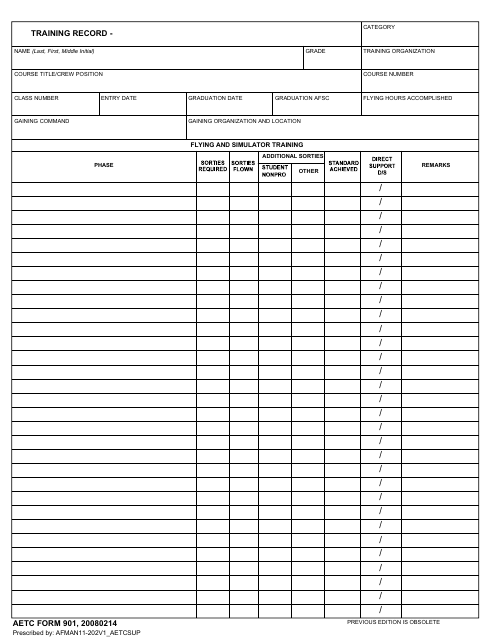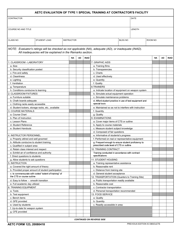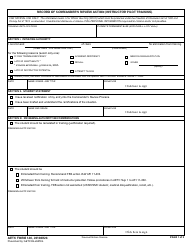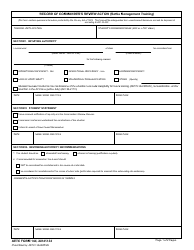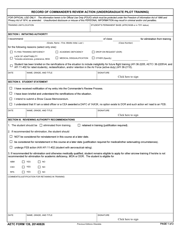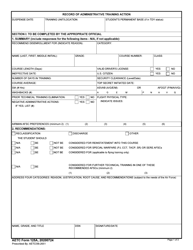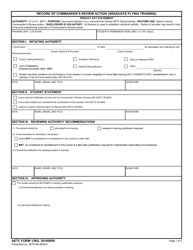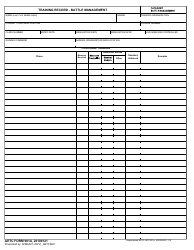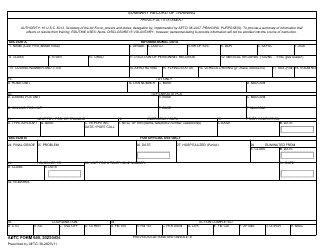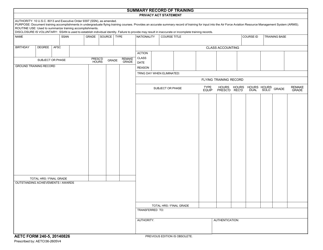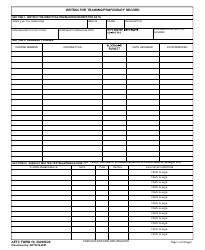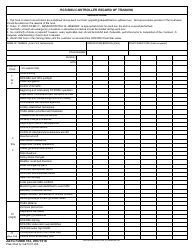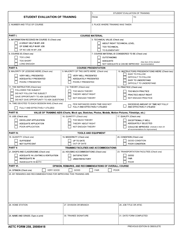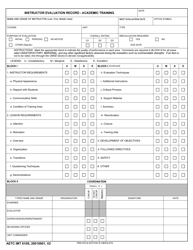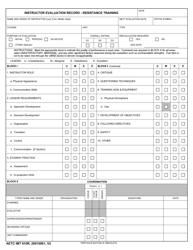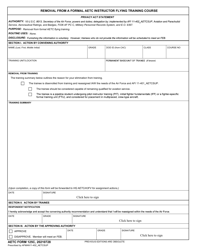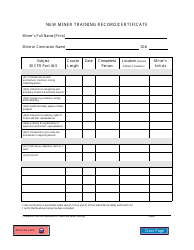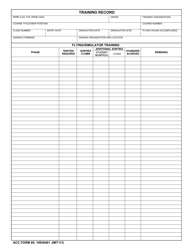AETC Form 901 Training Record
The AETC Form 901 Training Record is a document utilized in the United States Air Force, specifically within the Air Education and Training Command (AETC). The purpose of this form is to keep a detailed record of an individual service member's training progress. It encompasses details about courses attended, qualifications received, skills learned, progress in training programs, and other related training activities. This form assists commanding officers in tracking the development and proficiency of their personnel, especially during training and orientation. It is an important document in ensuring the continuous professional growth of airmen within the USAF.
In the United States, the AETC (Air Education and Training Command) Form 901 Training Record is filed by aircrew members of the U.S. Air Force. This form is used to document completion of various training requirements for air force personnel. These may include flight trainings, educational courses, and professional development programs.
FAQ
Q: What is the AETC Form 901?
A: The AETC Form 901, or Training Record, is a document used by the Air Education and Training Command (AETC) in the United States Air Force (USAF). This form helps track and record the progress of a service member's training throughout their career in the USAF.
Q: What functions does the AETC Form 901 serve?
A: The AETC Form 901 serves to record all specific trainings and courses that a USAF personnel has taken within the Air Education and Training Command. It keeps track of educational milestones, qualifications, course completions and career advancement requirements.
Q: Who is obligated to use the AETC Form 901?
A: The AETC Form 901 is typically used by members of the United States Air Force, specifically those within the Air Education and Training Command. It's crucial for instructors, training managers, and commanders who are in charge of tracking training progress.
Q: Is the AETC Form 901 available to the public?
A: As the AETC Form 901 contains potentially sensitive information about a service member's training and qualifications, it is not typically available to the general public. Access is usually limited to the individual service member and authorized USAF personnel.
